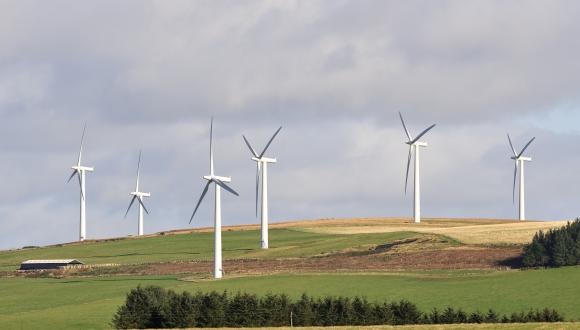Hydroelectric development planning tool
Our map helps planners and developers to select hydro development sites by showing which Scottish watercourses contain internationally important plantlife.
Scotland is internationally important for moss and liverwort – bryophyte - species that enjoy the globally-unusual oceanic climate of Scotland’s west coast. The distribution and occurrence of these bryophytes, particularly the rarest and most vulnerable species, is therefore a key factor when considering the siting and design of hydroelectric development.
We have created a planning tool to help with this, which consists of a map showing the extent of bryophyte communities in more than 5,600 watercourses on Scotland’s west coast. with each watercourse scored and categorised according to their known or potential importance for bryophytes.
Explore the map
Search the map for a watercourse by:
- entering a place name or postcode
- using the zoom and pan tools to navigate to an area
- holding down the shift key and clicking on the map to make a box around an area of interest Colour-coded circles show if a specific watercourse is important – the key explains the categories.
- Click on a circle to see which species are present.
For full details of the methodology and geographical limits of the assessment, read
NatureScot Commissioned Report No. 449b: Bryological assessment for hydroelectric schemes in the West Highlands
A review of the original assessment was undertaken in 2022 to take account of new data on species distribution and status, and the tool has been updated accordingly. We thank the Biological Records Centre and British Bryological Society for allowing us to access the data used in the bryophyte sensitivity assessment.
Regardless of the category of the watercourse, a bryophyte survey will still normally be required to support a hydroelectric scheme proposal, and consider the impact of water abstraction on bryophytes as well as the direct impacts of construction on important bryophyte habitats, e.g. springs, ancient woodland, deadwood and bogs.
Our film explains why bryophytes are so important.
Steep wooded ravines in the west of Scotland are beautiful examples of our Celtic Rainforest. In this video NatureScot’s David Genney gives an introduction to the character of these hidden places and to the special plants for which this cool rainforest is so important. The film was also developed as an information and training video to help hydro developers better understand the potential impacts of water abstraction on an internationally important assemblage of mosses and liverworts.
For full details of the methodology and geographical limits of the assessment, read
NatureScot Commissioned Report No. 449b: Bryological assessment for hydroelectric schemes in the West Highlands
We thank the Biological Records Centre and British Bryological Society for allowing us to access the data used in the bryophyte sensitivity assessment.







